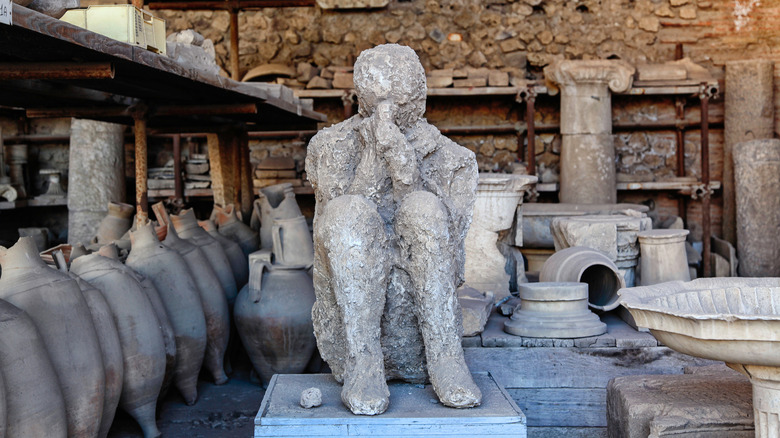How Historically Accurate Is The Movie Pompeii?
The eruption of Mount Vesuvius in A.D. 79 claimed the lives of roughly 2,000 people in the city of Pompeii and town of Herculaneum after massive amounts of volcanic ash buried and suffocated them in minutes (via The Guardian). In a morbid facet of the tragedy, many of the victims were captured in their final moments by the ash, as their bodies created cavities that facilitated the creation of plaster casts by modern archaeologists. At least qualitatively this was one of the worst recorded natural disasters, and while many survivors and residents who were away that day did attempt to return, the prosperous city never rose to its former glory again (via Ars Technica).
In 2014, such a setting was deemed by director Paul W.S. Anderson as the perfect environment for what many critics found to be a lackluster film. Kit Harrington starred in "Pompeii" as Milo, a Celtic orphan-turned-gladiator forced to navigate the politics of gladiatorial games, plot revenge against his mother's killer, rescue his romantic interest, and face the eruption of Vesuvius. While USA Today described the film as a "generic" cinematic take on ancient Rome, Anderson at least deserves a lot of credit when it comes to the background of the film.
CGI was used to build upon Pompeii's architecture
The volcanic ash from Pompeii did not just preserve the final moments of its residents, but many of the city's homes and businesses. Restaurants, paintings and mosaics, private villas, public graffiti, and even loaves of bread were preserved in remarkable detail by the eruption (via The Vintage News). Even if just in passing, Anderson made enough use of what survived to give the film a decently authentic character.
CG Supervisor Chris MacLean explained how the computer generated sets were generally constructed to match the actual buildings in scale (via Art of VFX). The film's depiction of the eruption itself was heavily praised by the geological community. This includes Dr. Rosaly M. Lopes-Gautier, who attests that while it was not 100% faithful, the film's overall depiction of the disaster from multiple earthquakes preceding the eruption to the delayed flow of ash after the eruption was at least objectively accurate (via Mental Floss).

